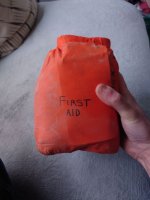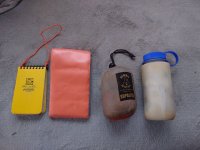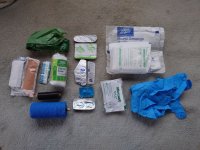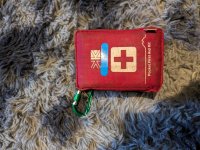Peregrina
Member
It needs to be small enough that once the initial novelty has worn off you can still be bothered to carry it underground!
I'd take just as well-equipped a first aid kit leading a group into something really easy like Peak or the Churns as on the surface because bulk isn't really an issue, but my true caving first aid kit is a little tupperware that fits in a tiny side bag. One of the DCRO doctors used to make and sell tiny kits to fit in an oversuit pocket, but I don't think she does them anymore unfortunately, but it most be possible to make one that small.
Think through what you're actually going to be able to help with and know how to do. Work through ABCDE and you'll probably realise all you're going to be usefully doing is potentially a bit of wound management (steri strips, little dressings maybe, I've seen medical gloves to cover hand gashes suggested), maybe supporting a sprain/strain and most likely of all managaing environmental issues which makes a bothy or survival bag the most important parts to my mind.
If you search on here this has been discussed lots before, just don't become one of the people carrying an emergency tracheotomy kit or a commercial tourniquet underground
I'd take just as well-equipped a first aid kit leading a group into something really easy like Peak or the Churns as on the surface because bulk isn't really an issue, but my true caving first aid kit is a little tupperware that fits in a tiny side bag. One of the DCRO doctors used to make and sell tiny kits to fit in an oversuit pocket, but I don't think she does them anymore unfortunately, but it most be possible to make one that small.
Think through what you're actually going to be able to help with and know how to do. Work through ABCDE and you'll probably realise all you're going to be usefully doing is potentially a bit of wound management (steri strips, little dressings maybe, I've seen medical gloves to cover hand gashes suggested), maybe supporting a sprain/strain and most likely of all managaing environmental issues which makes a bothy or survival bag the most important parts to my mind.
If you search on here this has been discussed lots before, just don't become one of the people carrying an emergency tracheotomy kit or a commercial tourniquet underground





